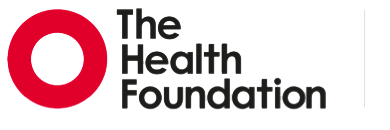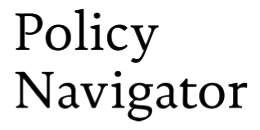- Share on LinkedIn
- Share on Bluesky
- Share on X
- Share by email
-
Link
Copy link
'Working for patients' white paper
The purchaser-provider split
The government published the white paper Working for patients in January 1989. The white paper proposed some of the most significant reforms in the history of the NHS and introduced a split between the bodies who provided care and those who purchased it, creating an internal market in the NHS.
The provisions in the white paper were realised through the National Health Service and Community Care Act 1990.
The two main objectives of the white paper were to:
- give patients better healthcare and greater choice
- generate greater satisfaction
- reward those working in the NHS who managed to successfully respond to local needs and preferences.
‘The government wants to raise the performance of all hospitals and GP practices to that of the best. The main question it has addressed in its review of the NHS has been how best to achieve that. It is convinced that it can be done only by delegating responsibility as closely as possible to where healthcare is delivered to the patient - predominately to the GP and the local hospitals. The best run services are those in which local staff are given responsibility for responding to local needs.’
The white paper proposed seven key measures:
- Functions were to be delegated to a local level.
- Hospitals would be allowed to apply for self-governing status as NHS hospital trusts. Trusts would earn revenue from the services they provided, thereby giving them a greater incentive to attract patients. Trusts would also be able to set the rates of pay for their own staff and borrow money to respond to demand.
- Money would follow the patient across administrative boundaries, with health authorities being able to obtain services from NHS hospitals outside their area or from the private sector.
- An additional 100 consultant posts would be created over 3 years (the posts were in addition to the planned 2% annual expansion in consultant numbers).
- Large GP practices (with a registered population of at least 11,000 patients) would be able to apply for their own budgets to procure services directly from hospitals.
- Regional, district and family practitioner management bodies would be reduced in size and reformed into more business-like organisations with executive and non-executive directors.
- There would be more rigorous audits of service quality and value for money. For the first time, government became involved substantially in quality issues.
The white paper was also positive about the role the private sector could play, citing its competitive tendering exercise for ancillary services as having been a success. The government suggested that there was scope for wider use of competitive tendering beyond non-clinical services, and health authorities were expected to consider private providers as part of their purchasing role.
'The National Health Service at its best is without equal ... The National Health Service will continue to be available to all regardless of income, and to be financed mainly out of general taxation. But a major task now faces us: to bring all parts of the National Health Service up to the very high standard of the best, while maintaining the principles on which it was founded ... We aim to extend patient choice, to delegate responsibility to where the services are provided and to secure the best value for money. All the proposals in this white paper put the needs of patients first.' (Margaret Thatcher in the foreword to Working for patients 1989).
Administrative structure
One of the central themes in the white paper was to delegate operational responsibility away from Whitehall. The government's proposals were to leave responsibility for strategy with an NHS policy board (replacing the Health Services Supervisory Board), chaired by the secretary of state. Operational decisions would be for an NHS management executive (replacing the NHS Management Board), chaired by a chief executive.
Centrally, the policy board and the management executive were established by Len Peach, who was NHS Chief Executive between 1986 and 1989. Secretary of State for Health, Kenneth Clarke, chaired the NHS Policy Board and Sir Roy Griffiths was deputy chair. The board membership also included the Chief Medical Officer, Sir Donald Acheson, but the Chief Nursing Officer was originally excluded, causing widespread concern among the nursing profession.
The terms of the reference for the board included:
- responsibilities for the creation of policy objectives for the NHS
- production of the strategy for the NHS Management Executive to work to
- monitoring the executive's performance.
The NHS Management Executive took on central responsibility on behalf of ministers:
- for the operation and management of the NHS
- to set objectives for NHS authorities in line with ministerial priorities
- to provide leadership to NHS management.
The Executive was able to develop policies on pay and resource allocation and set performance targets for NHS authorities. The Executive also had the responsibility for advising ministers and the Policy Board, and for managing family practitioner services (FPSs). It was ultimately accountable to the Policy Board.
Regional health authorities (RHAs) and district health authorities (DHAs) were to continue, but would be reduced in size and reformed into more business-like organisations (ie they would be smaller, with executive and non-executive directors, and no longer contain members from interest groups, local authorities and so on). DHAs were expected to delegate operational responsibilities to hospitals wherever possible.
Later changes to the administrative structure
Later, in 1994, the NHS Management Executive was renamed the NHS Executive. At this time, eight NHS Executive regional offices were established as part of the NHS Executive. Taking over many functions of the 14 RHAs (which were abolished on 1 April 1996) regional offices were responsible for:
- developing the commissioning function in the health service
- monitoring the financial performance of NHS trusts and linking them with central management
- setting and approving GP fundholders.
In 1995, the then Secretary of State for Health, Stephen Dorrell, reorganised the NHS Policy Board to confine its focus to the management of the NHS. Its membership was expanded to include regional chairs to allow for discussions between ministers and the regional representatives on management issues.
The 2001 white paper Shifting the balance outlined plans to replace the eight NHS Executive regional offices with four new regional directorates, which aligned with government offices of the regions. The eight regional offices were then abolished on 1 April 2002 and the regional directorates were abolished in 2003.
Changes to the funding mechanisms
Prior to the 'Working for patients' reforms, funding allocations to DHAs from RHAs generally reflected historical patterns of service use and did not reflect varying productivity, efficiency or performance. There was also no relationship between the amount of money a DHA was allocated and the number of patients its hospitals were treating. This offered limited incentives for hospitals to take on additional work or to improve productivity.
The government proposed that DHAs should have a duty to purchase the best possible services. This might mean a DHA purchasing services from other DHA hospitals or from the private sector, rather than their own hospitals.
The white paper also set out plans for independent audit. The government proposed to give the Audit Commission responsibility for the statutory external audit of NHS organisations in England and Wales.
Previously, this had been undertaken by health departments. The government was keen to encourage a greater focus on value for money and felt that scrutiny from an external, independent body would be more effective.
Working for patients also introduced the concepts of clinical audit in hospitals and in primary care as an intrinsic part of management, rather than as a professional 'add-on'. Money was made available to ease its introduction.
House of Commons.
Social Service Inspectorate. HC Deb 25 February 1985 vol 74 cc74-5W.
Hansard; 1985.
Department of Health.
Working for patients.
CM 555.
London: HMSO; 1989.

